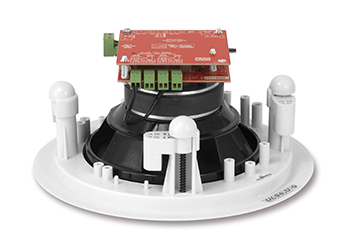ADA Requirements for Hearing Impaired Students
 Designing and outfitting schools to accommodate students of varying physical abilities is nothing new, and most school architects and builders are well aware of the building requirements outlined by the Americans with Disabilities Act (ADA). However, despite a rise in hearing loss among children, many schools remain unaware of the ADA requirements for the hearing impaired. These requirements mandate the installation of assistive listening devices to transmit and amplify sound in every newly constructed or altered classroom and assembly area. The most common type of assembly area in K-12 schools is the classroom.
Designing and outfitting schools to accommodate students of varying physical abilities is nothing new, and most school architects and builders are well aware of the building requirements outlined by the Americans with Disabilities Act (ADA). However, despite a rise in hearing loss among children, many schools remain unaware of the ADA requirements for the hearing impaired. These requirements mandate the installation of assistive listening devices to transmit and amplify sound in every newly constructed or altered classroom and assembly area. The most common type of assembly area in K-12 schools is the classroom.
According to the act, no fewer than two hearing aid compatible receivers are required in all newly constructed or altered spaces. The number of devices required increases based on seating capacity.
“When we think ADA requirements, what we think about is wheelchair access,” said Cory Schaeffer, co-founder of Bluffdale, Utah-based Listen Technologies, a manufacturer of assistive listening products. “However, compared to 1.4 percent of the population in a wheelchair, 17 percent have hearing loss [based on the World Health Organization’s definition].”
One reason that awareness is so low, according to Schaeffer, is many people consider hearing loss an issue that primarily affects older people. However, an estimated 12.5 percent of children and adolescents aged 6–19 years of age (approximately 5.2 million and rising) have suffered permanent damage to their hearing from excessive exposure to noise. The increase is often attributed to the use of ear buds or noise-canceling headphones used to listen to music, digital video players and other devices.
Hearing loss can have a tremendous impact on a child’s education. According the CDC, “even a small amount of hearing loss can have profound, negative effects on speech, language comprehension, communication, classroom learning and social development.”
Fortunately, there are solutions designed to facilitate the specification and installation of assistive listening technology. The hardware available is not specifically designed to integrate with this type of technology so installations can be unwieldy and overly complex, according to Marc D’Agostino a national audiovisual, technology and security consultant with D’Agostino & Associates of Stamford, Conn. The majority of the projects D’Agostino & Associates creates are bid specification documents for classroom and larger assembly areas in K-12 schools.
“For schools, the goal is to incorporate technology that meets ADA requirements while minimizing hardware, space and installation requirements, all while staying within the budget,” D’Agostino said.
D’Agostino often specifies a bundled speaker and assistive listening system from OWI Incorporated, a Carson, Calif.-based manufacturer of advanced audio equipment. OWI ceiling and wall-mounted speakers for schools have their own built-in amplifier, so no external amplifier is required. The Energy Star-compliant unit also provides power to the assisted listening system through the connection, eliminating the need for an additional power source. Perhaps most importantly, OWI speakers are one of the few systems at an entry-level price point that already have the built-in line out required to interface with an Assisted Listening System using a simple, three-wire connection.
The speaker can also eliminate the need for a separate, dedicated PA speaker, according to D’Agostino. To ensure emergency announcements can be made even if electrical power is lost, public address systems are typically hard-wired to a dedicated speaker in each classroom used for only that purpose. The system is connected to an uninterruptible power supply (UPS battery backup) and generator that turn on automatically during a power outage.
Because OWI speakers are built with a multi-coil speaker and priority override features, they can serve double-duty and eliminate the need for the separate PA speaker. In the event of power loss, the speaker will still function.
Regardless of the technology or systems installed, there are many incentives for schools to stay current with ADA requirements for the hearing impaired. Schools that fail to comply may receive complaints, which can now be filed online with the Department of Justice. In addition to being required to remedy the situation, schools can incur fines from $55,000 to $150,000.
Ultimately, though, it’s about children and quality education.
“As parents, we want our kids to do well at school because we want them to have the best opportunities in life,” Schaeffer said. “The ADA requirements provide K-12 students that have hearing loss with the same advantages and opportunities as everyone else. It’s a win-win-win for the child, parents and the school.”
Jeff Elliott is a Torrance, Calif.-based technical writer. He has researched and written about industrial technologies and issues for the past 20 years.
